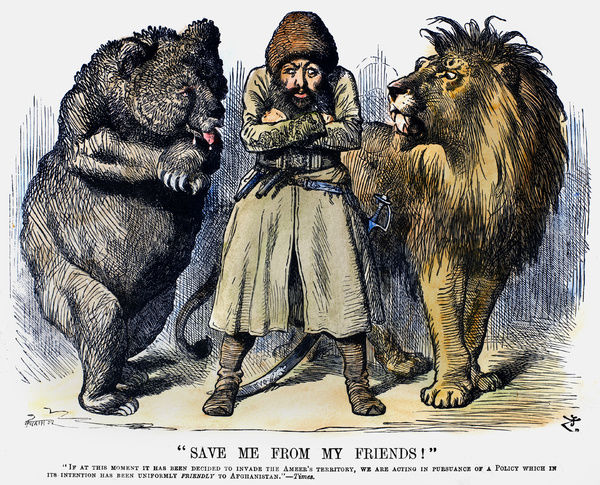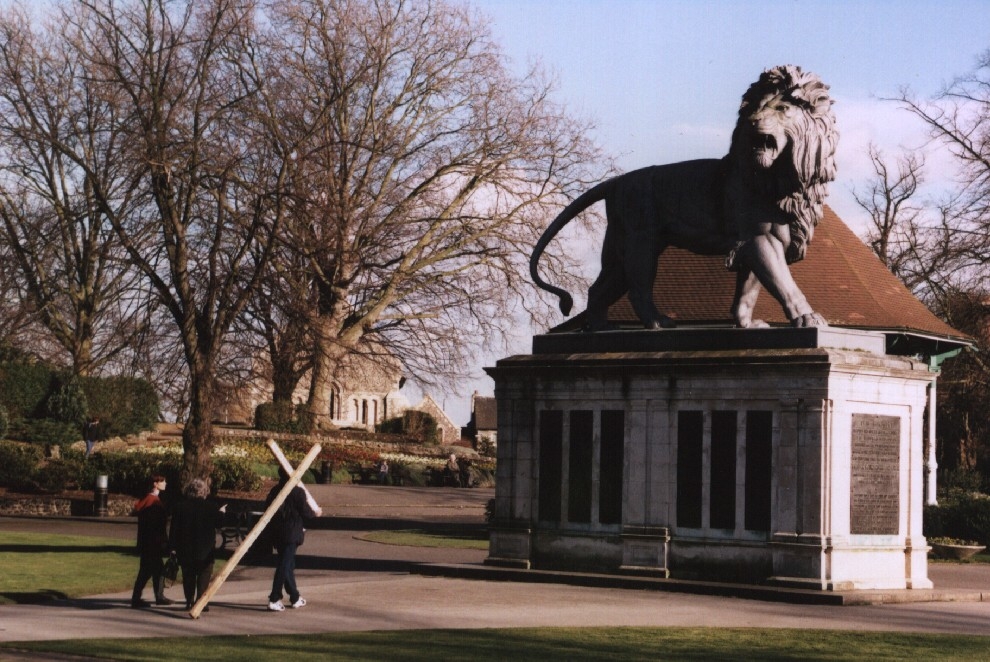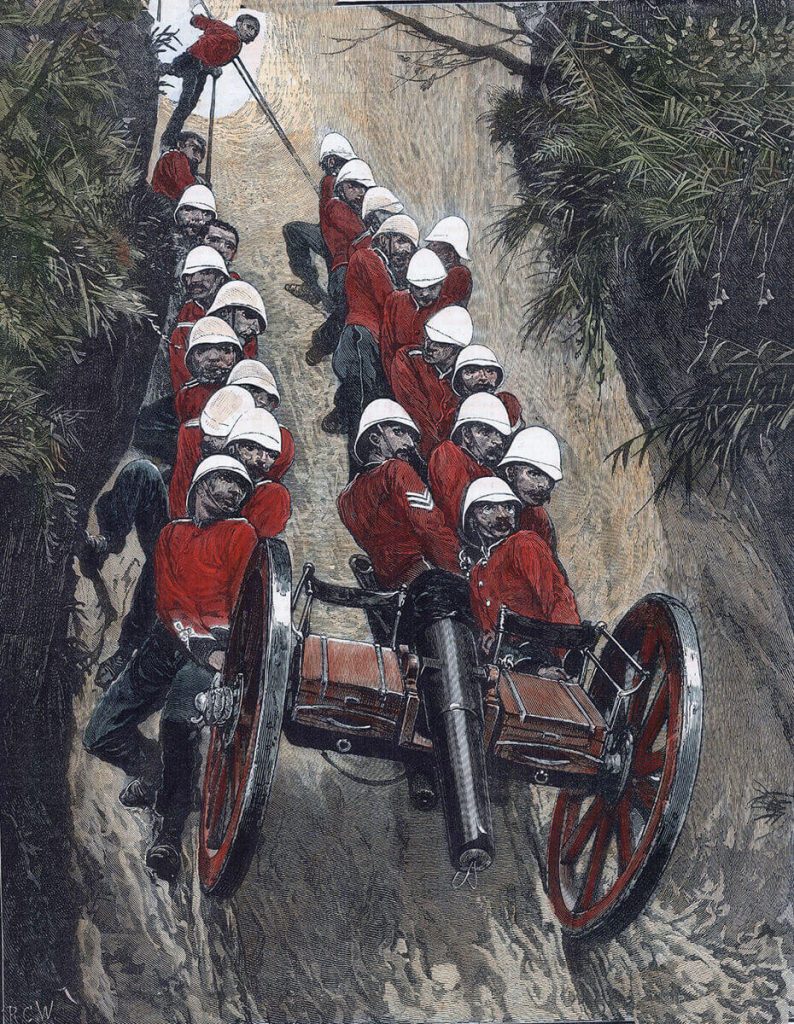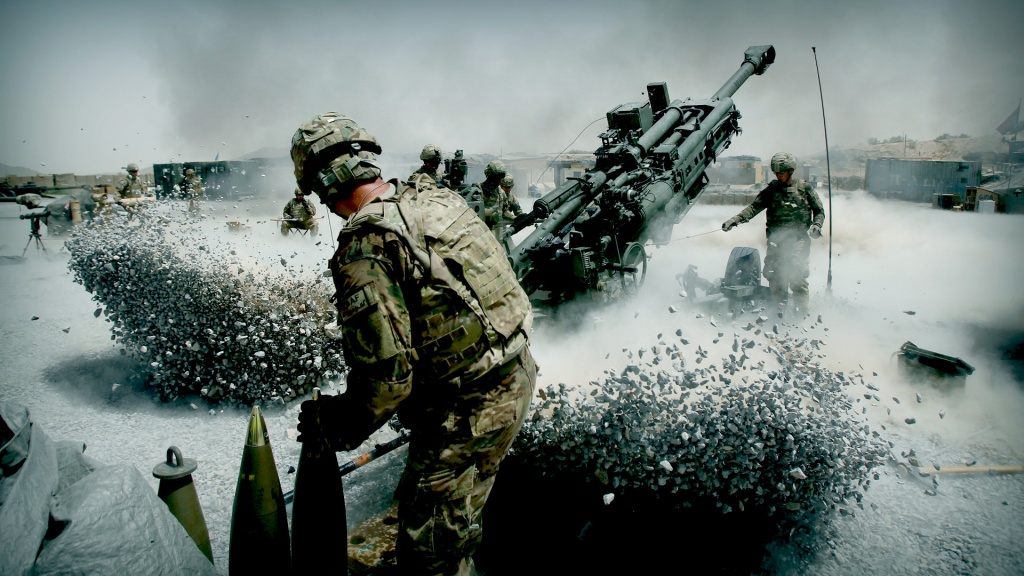Afghanistan
Tribalism, sectarianism and why Afghans were and are not ready to enter the “modern era”.

You’d think we’d learn from history!
Cartoon in Punch
SECOND AFGHAN WAR, 1878. Save Me From My Friends!
Amir Sher Ali of Afghanistan endeavors to stand between the Russian bear and the British lion as each eyes the other with suspicion. English cartoon by Sir John Tenniel, 1878, shortly after the outbreak of the Second Afghan War.

For any resident of Reading Afghanistan should hold a special place. Many of our lads died out there, and for what exactly?
The “Maiwand Lion” in the Forbury Gardens seems to be the only British memorial “commemorating” the battles at Maiwand (July 1880) and Kandahar (September 1880) see below ……
A quick look at history, including the Battle of Maiwand which we lost with 1000 dead! And just before the end he comments that reinstating the Afghani leader after the 2nd Afghan war was rather like if the Americans today put the Taliban back in charge. Ironically prophetic or what?
In short it is Islam that rules Afghanistan. It is a religion that seems to work best in a medieval rural economy, it does not lend itself to modernisation. The “west” is decadent, oppressed by the “Great Satan” that is America. It might well be that residents of Kabul have welcomed western ways, but in the country it is a different story. Sadly between 1929 and 1979 Afghanistan experienced a time of peace, almost a “Shangrila”.
And a recent comment by Rory Stewart
This is a very helpful lecture if you want to start tounderstand the complexities of Afghan society.
Thomas Barfield comments on the situation just 5 months ago. Withdrawing troops will not be as harmful as withdrawing financial support of the government. And other issues.
The Afghan project was a prime example of mission drift. What did the Afghans want?
However, back in the 50’s Afghanistan was familiar with the modern era, so the country as we think of it had clearly reverted. This from 10 years ago.
The Battle of Maiwand on 27 July 1880 was one of the principal battles of the Second Anglo-Afghan War. Under the leadership of Ayub Khan, the Afghans defeated a much smaller force consisting of two brigades of British and Indian troops under Brigadier-General George Burrows; albeit at a high price: between 2,050 and 2,750 Afghan Pashtun warriors were killed, and probably about 1,500 wounded. British and Indian forces suffered 969 soldiers killed and 177 wounded.

The Battle of Kandahar, 1 September 1880, was the last major conflict of the Second Anglo-Afghan War.
The battle in southern Afghanistan was fought between the British forces under command of General Roberts and the Afghan forces led by Ayub Khan, ended with a decisive British victory, inflicting nearly 3,000 casualties in total.

The Battle of Kandahar was an attack by Taliban forces on May 7, 2011, in the city of Kandahar. The battle was part of the 2011 Taliban Spring Offensive.[3] The battle was the biggest Taliban offensive of 2011, marking over 40 total deaths and over 50 total wounded. The fighting demonstrated that, despite heavy losses since 2001, the Taliban forces remain a threat to coalition and Afghan forces, and show that morale in insurgent groups has not died since the death of Bin Laden. Wikipedia.

The Battle of Kandahar[3] began on 9 July 2021, as Taliban insurgents assaulted the city to capture it from the Afghan National Security Forces (ANSF).[4] After heavy fighting for weeks the city’s defenses had started to dissolve in August. This allowed the Taliban to enter and overrun most of the city on 12 August 2021, including the Sarposa prison, which included the release of over 1,000 prisoners, and ultimately the capture of the city.[5] However, the siege for the nearby airport continued, where government loyalists held out until being evacuated on 16 August.[1]